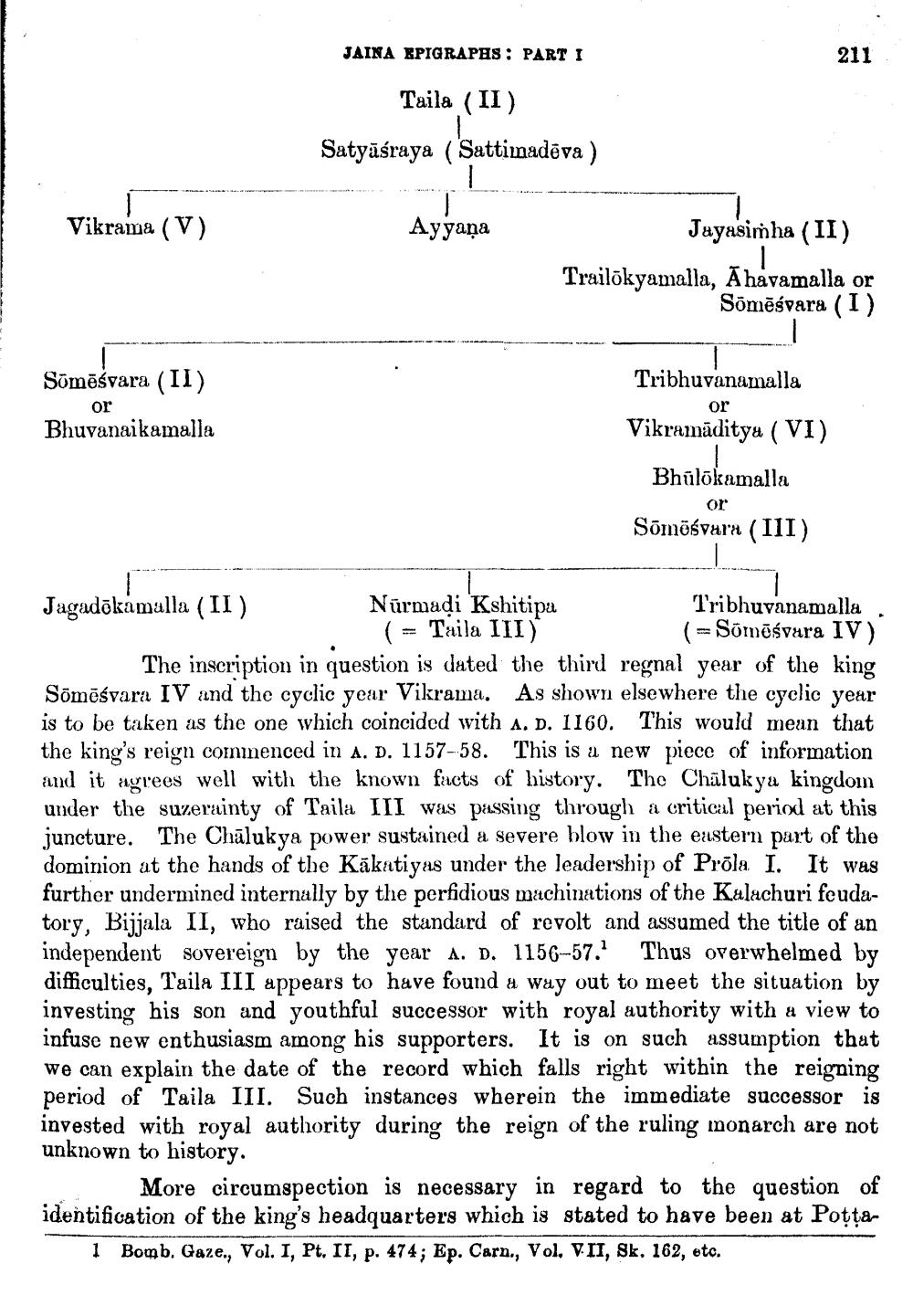________________
JAINA EPIGRAPHS : PART I
Taila (II) Satyāśraya (Sattinadēva )
Vikrama (V)
Ayyaņa
Jayasimha (II) Trailökyamalla, Āhavamalla or
Somēśvara (1)
Sõmāśvara (II)
or
Tribhuvanamalla
or Vikramāditya (VI)
Bhuvanaikamalla
Bhūlākamalla
or Sömāśvara (III)
Jagadēkamalla (II) Nūrmadi Kshitipa
Tribhuvanamalla. ( = Taila III)
( = Sõmāśvara IV) The inscription in question is dated the third regnal year of the king Sõmēśvara IV and the cyclic year Vikrama. As shown elsewhere the cyclic year is to be taken as the one which coincided with a. D. 1160. This would mean that the king's reign commenced in A. D. 1157-58. This is a new piece of information and it agrees well with the known facts of history. The Chalukya kingdom under the suzerainty of Taila III was passing through a critical period at this juncture. The Chālukya power sustained a severe blow in the eastern part of the dominion at the hands of the Kākatiyas under the leadership of Prola I. It was further undermined internally by the perfidious machinations of the Kalachuri feudatory, Bijjala II, who raised the standard of revolt and assumed the title of an independent Sovereign by the year a. D. 1156-57. Thus overwhelmed by difficulties, Taila III appears to have found a way out to meet the situation by investing his son and youthful successor with royal authority with a view to infuse new enthusiasm among his supporters. It is on such assumption that we can explain the date of the record which falls right within the reigning period of Taila III. Such instances wherein the immediate successor is invested with royal authority during the reign of the ruling monarch are not unknown to history
More circumspection is necessary in regard to the question of identification of the king's headquarters which is stated to have been at Potta
1 Bomb. Gaze., Vol. I, Pt. II, p. 474; Ep. Carn., Vol. VII, Sk. 162, etc.




